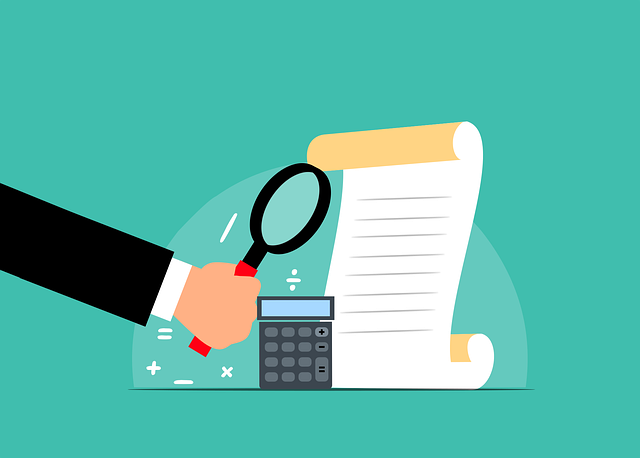In the UK, Risk Assessment Reports (RARs) are crucial for multiple sectors, demanding accurate translations to avoid misunderstandings with severe consequences. UK translation services specializing in RARs employ native experts skilled in risk assessment terminology and UK legal requirements to ensure compliance and global stakeholder understanding. These services navigate complexities like linguistic nuances, technical jargon, and regulatory differences, prioritizing accuracy, cultural relevance, and consistency for clear communication worldwide. Quality Assurance processes and adherence to best practices guarantee reliable translations tailored to the UK market's stringent demands.
Ensuring clarity in translated UK risk evaluation documents is paramount for effective communication and regulatory compliance. This comprehensive guide delves into the intricacies of understanding risk assessment reports specific to the UK, emphasizing the vital role of clear communication in translations. We explore common challenges, from cultural nuances to technical jargon, and provide strategic insights on selecting top-tier UK translation services, maintaining accuracy, and implementing robust quality assurance processes. Discover best practices for reviewing and validating translations to meet stringent industry standards.
- Understanding Risk Assessment Reports in the UK
- The Importance of Clear Communication in Translations
- Challenges in Translating Risk Evaluation Documents
- Selecting the Right UK Translation Services
- Ensuring Accuracy and Consistency in Translation
- Incorporating Cultural Nuances in Risk Assessments
- Quality Assurance Processes for Translated Reports
- Best Practices for Reviewing and Validating Translations
Understanding Risk Assessment Reports in the UK

In the United Kingdom, Risk Assessment Reports (RARs) play a crucial role in various sectors, from construction and healthcare to manufacturing. These reports detail potential hazards, their likelihood, and associated consequences, providing a comprehensive overview of risks within an organization or project. Accurate translation is paramount when dealing with RARs, as miscommunication can lead to severe repercussions. UK risk evaluation documents often require professional translation services to ensure clarity for international stakeholders.
When translating RARs, specialized language and technical expertise are essential. Translators must grasp the nuances of risk assessment terminology while maintaining accuracy in a new language. Effective translation services will employ native-speaking experts who understand the cultural context and legal requirements, ensuring compliance with UK regulations. This meticulous process guarantees that the translated documents convey the original report’s intent, facilitating informed decision-making for global audiences.
The Importance of Clear Communication in Translations

In the realm of international business, clear communication is paramount, especially when dealing with critical documents such as Risk Assessment Reports from the UK. When translating these reports for a global audience, precision and lucidity in language choice become the linchpins of effective communication. Ambiguity or jargon that might be acceptable in one linguistic context can prove detrimental, leading to misunderstandings and misaligned risk mitigation strategies.
Professional UK translation services understand this vital aspect, employing linguists who not only excel in their native languages but also possess a deep grasp of the nuances in risk evaluation terminology. They meticulously interpret and adapt these reports, ensuring that the translated documents convey the same level of clarity and specificity as the original. This meticulous approach is crucial for fostering trust among stakeholders worldwide, enabling informed decision-making based on consistently understood risk assessment data.
Challenges in Translating Risk Evaluation Documents

Translating risk assessment reports accurately presents unique challenges, especially when it comes to documents from the UK. These challenges stem from both linguistic and technical aspects. Language-wise, terms related to risk evaluation often have nuanced meanings that can be difficult to convey precisely in another language. Technical jargon and specialized terminology used within these reports require a deep understanding of the subject matter to ensure accurate translation without adding or altering original intent.
Moreover, UK risk assessment documents may follow specific regulatory frameworks and standards not universally applied, complicating matters for translators. Contextual nuances, subtle differences in risk perception across cultures, and varying legal terminologies all contribute to potential ambiguities. Therefore, enlisting the aid of professional UK translation services specializing in risk assessment reports is paramount. These services employ linguists with expertise in both the source and target languages, ensuring that technical accuracy and cultural relevance are maintained throughout the translation process.
Selecting the Right UK Translation Services

When it comes to translating UK risk assessment reports, choosing the right translation service is paramount to ensure accuracy and clarity in communication. Seek out providers with expertise in regulatory documentation, as they’ll understand the nuances of technical and legal language within the context of risk evaluations. Look for native English speakers who can deliver seamless translations, preserving the integrity of critical information.
Reputation and experience are key indicators. Opt for translation services with a proven track record in handling similar documents, maintaining high-quality standards, and adhering to industry best practices. This minimizes the risk of errors or misinterpretations that could compromise the document’s effectiveness.
Ensuring Accuracy and Consistency in Translation

Ensuring accuracy and consistency in translating UK risk assessment reports is paramount for effective communication and compliance. Professional translation services should employ qualified linguists who are not only fluent in both source and target languages but also possess domain expertise in risk management. This ensures that technical terms and concepts are conveyed precisely, preserving the intended meaning and avoiding misinterpretation.
Consistency is another critical aspect. Terminology and phraseology must be standardised across all translated documents to maintain coherence. Using glossaries and style guides helps achieve this consistency, ensuring that specific terms and expressions are rendered identically every time. This uniformity not only enhances readability but also facilitates comprehension for stakeholders worldwide.
Incorporating Cultural Nuances in Risk Assessments

When translating UK risk evaluation documents, it’s crucial to go beyond mere word-for-word equivalency and incorporate cultural nuances. Risk Assessment Reports often contain idiomatic expressions or references that may not have direct equivalents in other languages. A skilled translator must understand these subtle meanings and convey them accurately while ensuring the report remains clear and effective in the target language.
For instance, certain risk assessment terms might carry different connotations across cultures. What is considered an acceptable level of risk in one country might be viewed differently in another. Professional UK translation services specialize in navigating these complexities, ensuring that the translated document not only maintains the original meaning but also resonates with the cultural context of the intended audience. This attention to detail is vital for effective communication and compliance in global business operations.
Quality Assurance Processes for Translated Reports

When utilizing UK risk assessment reports translation services, it’s paramount to implement robust Quality Assurance (QA) processes. These procedures act as a shield against potential errors and misinterpretations that could skew the original intent of the document. A comprehensive QA framework involves multiple layers of scrutiny, starting with translation accuracy checks. Here, skilled linguists double-check the translated text for grammatical correctness, fluency, and adherence to industry terminology. This ensures that the risk assessment remains valid and effective in the target language.
Beyond initial translation, post-translation review is equally critical. This step involves subject matter experts who scrutinize the document’s technical accuracy, ensuring compliance with regulatory requirements. They verify that the translated report accurately reflects the UK risk assessment standards and guidelines. Moreover, formatting consistency is maintained to preserve the original layout and structure, crucial for easy reference and navigation. These QA measures are essential in delivering high-quality, reliable Risk Assessment Reports tailored to meet the stringent demands of the UK market.
Best Practices for Reviewing and Validating Translations

When reviewing and validating translations of UK risk assessment reports, adherence to best practices is paramount. These include thorough comprehension of the source document by language experts who are familiar with industry-specific terminology and regulatory frameworks. Comparisons between the original and translated texts should be meticulous, ensuring not just grammatical accuracy but also preservation of the report’s structural integrity and intended tone.
Additionally, contextual relevance and cultural adaptability are crucial. Translations must convey the same level of detail and precision as the original, while accounting for any nuances specific to the target region or industry. Employing native speakers with relevant professional qualifications can significantly enhance accuracy and ensure that the translated risk assessment reports comply with both language and regulatory standards, thereby maintaining credibility and reliability.
When dealing with UK risk assessment reports, clarity is paramount. Effective communication ensures that crucial information is accurately conveyed, regardless of language barriers. By selecting reputable translation services that specialize in these documents, incorporating cultural nuances, and implementing robust quality assurance processes, you can ensure the integrity and precision of translated risk evaluation materials. Adhering to best practices for reviewing and validating translations further solidifies the accuracy of the final product. Remember, clear communication fosters trust, facilitating informed decision-making based on reliable, unambiguous risk assessment reports.
